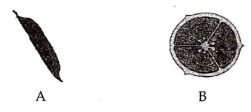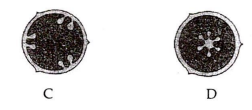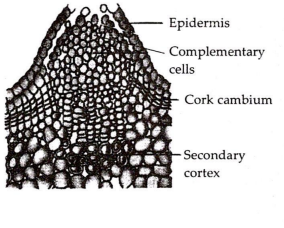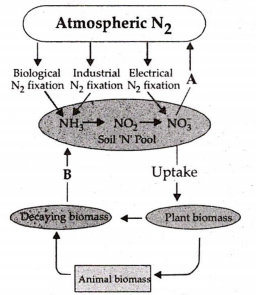 Multiple Choice Questions
Multiple Choice QuestionsBacteria, fungi, lower plants survive in adverse conditions by
diapause
suspended growth
migration
formation of thick walled spores.
Identify the given figures A, B, C, D and E.



| A | B | C | D | E |
| Marginal | Axile | Free central | Parietal | Basal |
| A | B | C | D | E |
| Marginal | Parietal | Free central | Axile | Basal |
| A | B | C | D | E |
| Marginal | Axile | Parietal | Free central | Basal |
| A | B | C | D | E |
| Marginal | Axile | Parietal | Basal | Free central |

structure of lenticel
hydathode showing gaseous vapour exchange
fungus reproducing by spore formation
algae reproducing by spore formation.
In the given diagram A and B represent

| A | B |
| Mineralisation | Demineralisation |
| A | B |
| Ammonification | Denitrification |
| A | B |
| Denitrification | Ammonification |
| A | B |
| Denitrification | Mineralisation |
In active transport, carrier proteins are used, which use energy in the form of ATP, to
transport molecules against concentration gradient of cell wall.
transport molecules along concentration gradient of cell membrane.
transport molecules against concentration gradient of cell membrane.
transport molecules along concentration gradient of cell wall.
In a 50 gm living tissue, what would be the amount of water
15- 25 gm
25 - 30 gm
35- 45 gm
70- 90 gm
After glycolysis, fate of glucose in mitochondrial matrix is
oxidation
reduction
oxidative decarboxylation
hydrolysis
Cleistogamy is leading over anthesis because
pollination agent is not required
it assures heterozygosity
it favours insect pollination
it allows xenogamy
A.
pollination agent is not required
Cleistogamous flowers do not open at all. In such flowers, the anthers and stigma lie close to each other. Anthers when dehisce in the flower buds, pollen grains come in contact with the stigma to effect pollination Thus, cleistogamous flowers are autogamous as there is no chance of cross-pollination. So, no pollination agent is required in these flowers.
